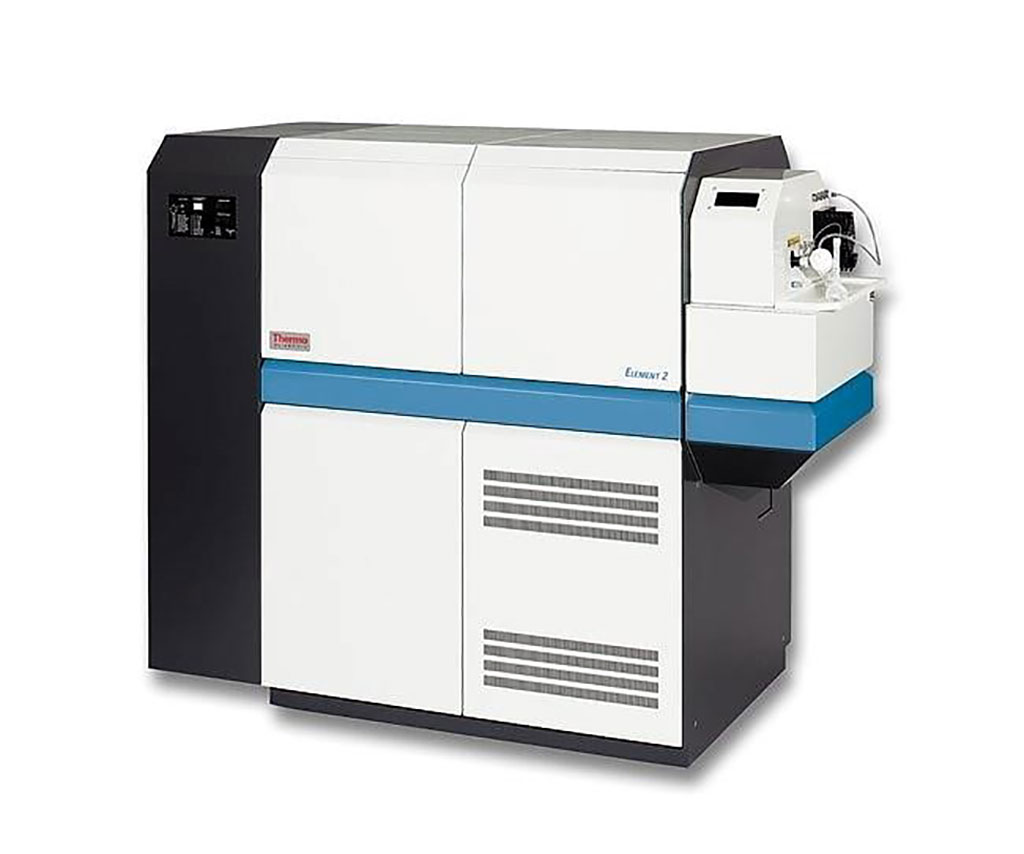Elevated Metal Ion Level Detects Defective Hip Arthroplasty Implants
By LabMedica International staff writers
Posted on 26 May 2020
Total hip replacement (THR) has proven to be a highly effective treatment of degenerative joint disease. Hip replacement implants can be made of different metallic alloys according to their specific properties and the related clinical need.Posted on 26 May 2020
Metal ions from these alloys will be systematically released due to the bearing wear, taper junction wear/corrosion or passive surface corrosion. Performance of each implant can be assessed indirectly by measuring systemic ion levels in whole blood.

Image: The Element 2 High Resolution, Sector-Field, Inductively Coupled Plasma Mass Spectrophotometer (HR-ICP-MS) (Photo courtesy of Thermo Fisher Scientific).
Medical Laboratory Scientists at the Maisonneuve-Rosemont Hospital (Montreal, QC, Canada) collected 71 whole blood samples were collected from 64 patients with unilateral ceramic-on-ceramic hip arthroplasty. For each patient, two whole blood samples were collected and analyzed in two different laboratories.
The investigators analyzed 71 pairs of whole blood samples from 64 patients. Patient’s mean age at time of surgery was 54 years old (range 33–73; ± 9.2), 26 men and 38 women. In one laboratory the concentrations of titanium (Ti), Chromium-cobalt (Cr and Co) ions in whole blood samples were measured with a single quadrupole ICP-MS Elan DRCII (PerkinElmer, Waltham, MA, USA). The detection limits were 0.1 μg/L for Cr and 0.035 μg/L for Co. In the other laboratory the concentrations of Ti, Cr and Co ions in the whole blood samples were measured in an Element 2 High Resolution, Sector-Field, Inductively Coupled Plasma Mass Spectrophotometer (HR-ICP-MS, Thermo Fisher Scientific GmBH, Bremen, Germany). The detection limits were 0.1 μg/L for Cr and 0.02 μg/L for Co.
The scientists reported that the for distributions of Ti concentrations from the two laboratories there was no distinction for the direction of the difference in Ti concentration (minus or positive) since 100% of results from laboratory 1 were higher than laboratory 2. The concentrations obtained from laboratory 1 are significantly different from those of laboratory 2. The average ratio between laboratories (#1 divided by #2) is 4.10 (range 1–20.76). In 69% of cases the difference was above 300%, and in 39% above 500%. The team found that 64/71 (90%) of paired samples had an absolute difference above the predetermined threshold of 1 μg/L. A mean variation ratio of 410% between the two laboratories was found.
The authors concluded that metal ions blood screening is a common way of detecting mal-functioning orthopedic implants. However, all laboratories do not use the same technologies or calibrations to do these measurements. Different laboratories leading to a significant risk of misinterpretation can measure clinically significant level difference. Therefore, clinical decision should not rely on a single measurement made by one laboratory. The study was published on May 8, 2020 in the journal Practical Laboratory Medicine.














